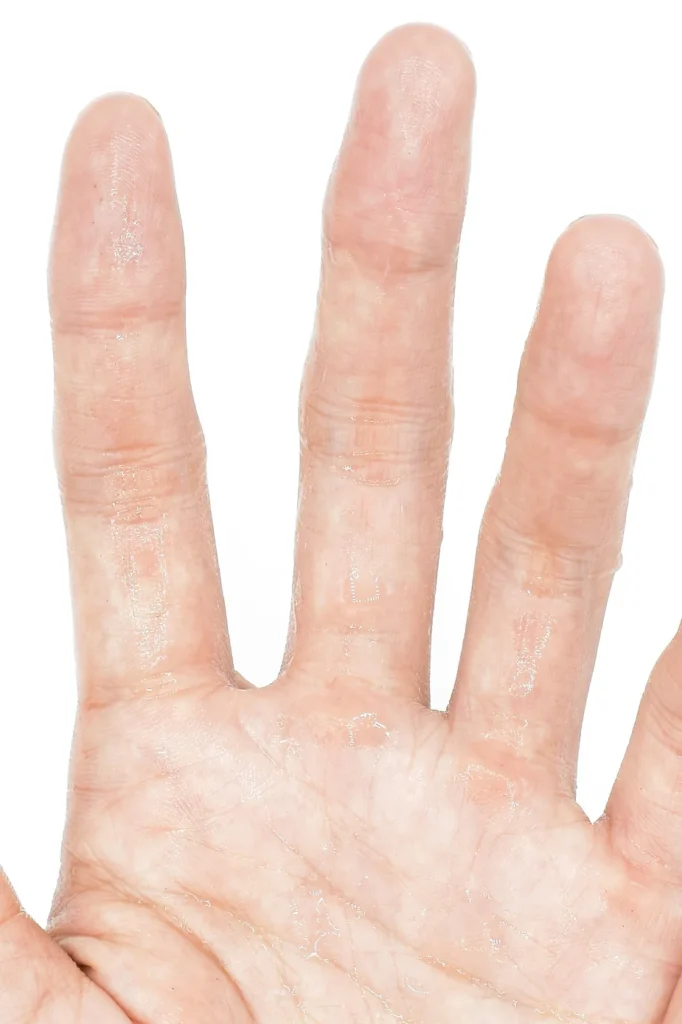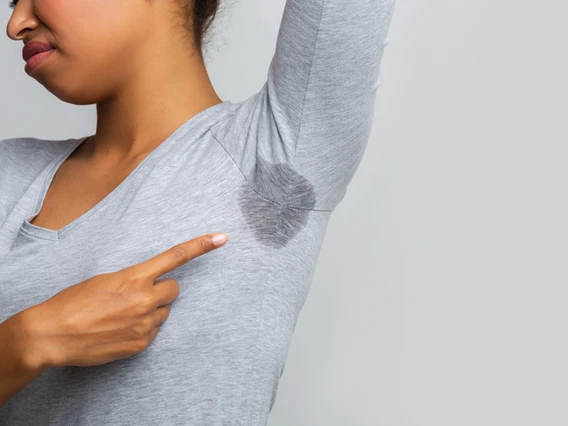Hyperhidrosis
Hyperhidrosis causes your body to sweat more than it needs to, sometimes for no apparent reason. Sweating can be uncomfortable and embarrassing, which is why many people never seek help. Hyperhidrosis treatments (like special antiperspirants and high-tech therapies) offer you options. You can reduce your symptoms and feel in control of your life.
What is hyperhidrosis?
In hyperhidrosis, your body’s sweat glands overact. This overactivity causes you to sweat a lot, at times and places where other people wouldn’t.
Sometimes, a medical condition or emotion (like anxiety) triggers excessive sweating. For many people with hyperhidrosis, managing symptoms can be a constant challenge.
How common is hyperhidrosis?
Estimates suggest between 2% and 5% of people in the U.S. have hyperhidrosis. However, that number may be higher. Many people who sweat excessively don’t talk about their symptoms and never tell their healthcare provider. That makes it hard to gauge how many people hyperhidrosis affects.
What causes hyperhidrosis?
Sweating is how your body cools itself when it gets too hot (when you’re exercising, sick or really nervous). Nerves tell your sweat glands to start working. In hyperhidrosis, certain sweat glands work overtime for no apparent reason, producing sweat that you don’t need.
Focal hyperhidrosis commonly results from:
- Certain odors and foods, including citric acid, coffee, chocolate, peanut butter and spices.
- Emotional stress, especially anxiety.
- Heat.
- Spinal cord injury.
Generalized or secondary hyperhidrosis can result from:
- Dysautonomia (autonomic dysfunction).
- Heat, humidity and exercise.
- Infections, such as tuberculosis.
- Malignancies, such as Hodgkin disease (cancer of the lymphatic system).
- Menopause.
- Metabolic diseases and disorders, including hyperthyroidism, diabetes, hypoglycemia (low blood sugar), pheochromocytoma (a benign tumor in the adrenal glands), gout and pituitary disease.
- Severe psychological stress.
- Some prescription drugs, including certain antidepressants (bupropion or Wellbutrin®) and insulins (Humulin® R).
In secondary hyperhidrosis, a medical condition or medication causes you to sweat more than usual. Medical experts haven’t uncovered what causes the body to produce extra sweat in focal hyperhidrosis.
What parts of the body does hyperhidrosis affect?
Generalized hyperhidrosis makes you sweat all over. Focal hyperhidrosis mostly affects the:
- Armpits (axillary hyperhidrosis).
- Bottoms (soles) of the feet (plantar hyperhidrosis).
- Face, including the cheeks and forehead.
- Lower back.
- Genitals.
- Undersides (palms) of the hands (palmar hyperhidrosis).

Using Botox Injections Effectively
The use of Botox for the treatment of hyperhidrosis can be effective. Injections can be administered in a doctor’s office and require relatively little time, and do not demand any restrictions in work or leisure activity (aside from refraining from intensive exercise or the use of a sauna on the day of the injections).
During the procedure, a very fine needle is used to inject tiny amounts of Botox just under the skin intermittently throughout the area of excessive sweating (in a grid pattern, approximately every 1 to 2 centimeters.) Multiple injections are given based on your care provider’s assessment of the area that needs to be treated. To ease any potential discomfort, clinicians may use one or more of a number of anesthetic techniques such as nerve blocks, ice, or vibration analgesia.
After you receive Botox injections for any focal area, it’s recommended that you follow up with your healthcare provider in 1 to 2 weeks. This follow-up is highly useful because it enables your clinician to ‘touch-up’ any sweating areas that may have been missed during the first round of injections and ensure that you are getting the treatment’s full benefit.
The cost of Botox treatments for hyperhidrosis will vary depending upon the size of the body area you need to be treated and whether insurance will cover any of the cost for you. A general estimate of the cost for two underarms is about $1,000.
Botulinum toxin injections do not cure hyperhidrosis; your symptoms will go away gradually (usually in about a week) and return gradually. Follow-up injections are required to maintain dryness. These repeat injections may be necessary at intervals varying from 7 to 16 months.
Our experienced injector at Anew Clinic can speak with your about your concerns and create a customized treatment plan to fit your needs. You don’t have to continue to suffer with hyperhidrosis any longer. Contact our Savannah office to schedule your consult today! We can be contacted by phone at 912-541-2418




